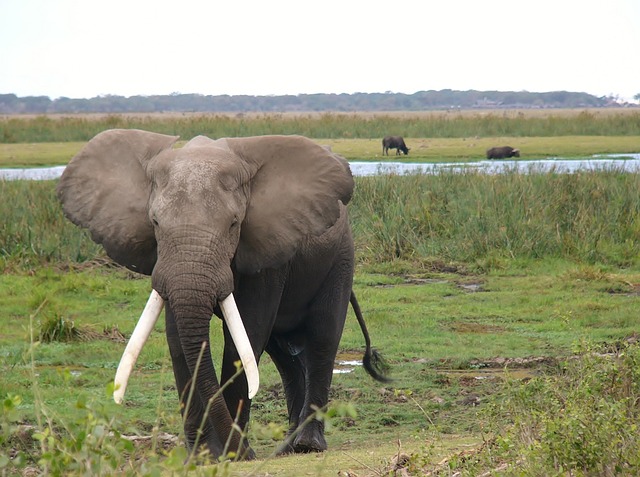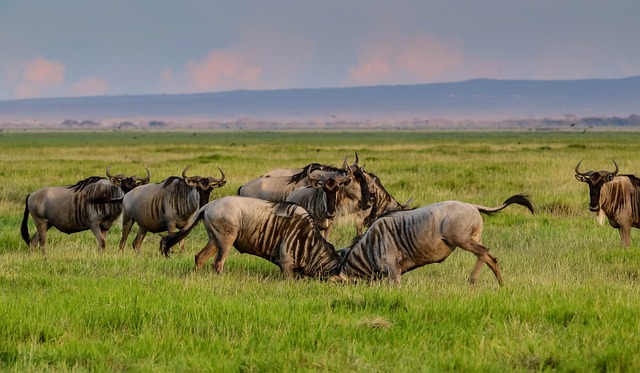The conservation of Kenya’s wildlife heritage is of utmost importance to preserve the rich biodiversity and ecological balance of the country. Kenya, renowned for its breathtaking landscapes and diverse wildlife, including iconic species such as elephants and lions, the endangered species of rhinos and leopards, and many others, is a global hotspot for wildlife enthusiasts and conservationists alike. These species not only contribute to the beauty of Kenya’s natural landscape but also play a crucial role in maintaining healthy ecosystems and providing numerous ecological, economic and cultural benefits.

Ecologically, it plays a vital role in maintaining the delicate balance of ecosystems. Each species, whether large or small, contributes to the intricate web of life, ensuring the functioning of natural processes such as pollination, seed dispersal and nutrient cycling. Furthermore, the preservation of wildlife habitats safeguards biodiversity, enhancing the resilience of ecosystems and their ability to adapt to environmental changes.
Economically, Kenya’s wildlife is a valuable asset that drives tourism, contributing significantly to the country’s economy. Tourism is the second largest source of foreign exchange revenue in Kenya and the people are known to be welcoming and friendly to tourists and foreigners. The allure of observing majestic elephants, graceful giraffes and elusive big cats attracts millions of tourists each year, generating revenue and employment opportunities for local communities. Safeguarding the wildlife heritage of Kenya is not only a matter of ecological responsibility but also an investment in sustainable economic growth.
Culturally, Kenya’s indigenous communities have coexisted with wildlife for centuries forming deep- rooted cultural connections. Many tribes such as, the Maasai and Samburu, have traditional beliefs and rituals centered around wildlife, considering certain species as sacred or holding symbolic significance. In addition, communities that once took part in traditional hunting practices have now transformed them into wildlife conservation efforts. This is through embracing alternative livelihoods that not only protect wildlife but also, contribute to the cultural and economic well- being of local populations. The conservation of Kenyan wildlife ensures the preservation of these cultural practices allowing future generations to learn and appreciate their rich heritage.
However, the preservation of Kenya’s wildlife heritage is facing numerous challenges, necessitating a concerted effort to protect these invaluable resources for future generations. Kenya has demonstrated a commitment to preserving its wildlife heritage through various conservation initiatives. The country has established a network of national parks, reserves and sanctuaries such as, the Amboseli National Park and the Maasai Mara Reserve, providing protected areas for wildlife to thrive. These conservation areas offer a safe haven for endangered species and support crucial breeding and migration patterns.

Furthermore, community- based conservation initiatives have gained traction, involving local communities in conservation efforts. By empowering local communities and providing incentives for wildlife conservation such as, revenue- sharing mechanisms and ecotourism opportunities, these initiatives create a sense of ownership and promote sustainable practices that benefit both people and wildlife. “Kenya Wildlife Service built a school for our children and provides us with security and employment opportunities and in turn, we offer our assistance in ensuring the conservation of the wildlife in the park,” said Madam Lucy, a neighboring resident of Amboseli National Park.
In conclusion, Kenya’s wildlife heritage is a source of pride and inspiration, holding immeasurable ecological, economic and cultural value. Preserving this heritage requires long- term commitment and collective action from government bodies, local communities and individuals. By safeguarding Kenya’s wildlife, we not only protect unique species but also ensure a sustainable future for generations to come. Let us embrace our role as stewards of this magnificent heritage and uphold Kenya’s position as a global leader in wildlife conservation.
Article by a group of 4 members:
- Gathogo Wendy Wanjiku
- Victoria Mueni Mwema
- Lynne Achieng
- Ali Fazal
- John Wanyoike
- Francis Kakai
